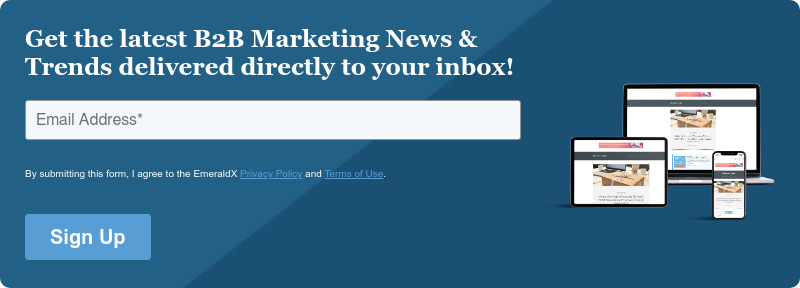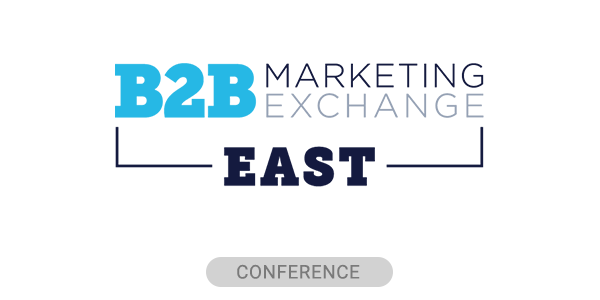Research has often cited that B2B buying cycles are longer and more complex, but marketing and sales teams say they’re now grappling with two additional factors impacting their go-to-market strategies in 2025: tighter budgets (65%) and increased competition (45%).
“With so many businesses competing for the same audience’s attention, standing out requires a strategic approach,” said Rob Harlow, Chief Innovation Officer at Sopro in an interview with Demand Gen Report. In fact, the company found in a survey of more than 400 senior B2B decision-makers, and data from 97.9 million emails and 21.6 million multichannel touch points that there are 4.14 stakeholders in the average decision-making process and more than a third of businesses report the sales process is taking longer.
However, 88% of B2B buyers said they wanted to hear from vendors when researching their options. This is why Sopro combed various data sources to understand which channels and tactics resonate most. For instance:
- 73% of B2B vendors say prospecting is essential to their new business strategy
- 75% say results are better when multiple prospecting channels are combined
- 45% say generating enough leads is their top challenge
- Vendors use a combination of internal databases (65%), social media (53%), event registration data (38%) and other platforms to identify prospects and source contact details
Harlow sat down with Demand Gen Report to dig into this data and other findings from Sopro’s latest report, The State of Prospecting 2025.
Demand Gen Report (DGR): 75% of B2B businesses report that email prospecting returns “good to excellent” ROI. What’s going wrong for the remaining 25%?
Harlow: One of the top reasons prospecting strategies deliver poor results and ROI is that they’re failing to adequately invest in email deliverability infrastructure, including domain rotation, warm up, blacklist monitoring and message variance. It’s no use crafting a top-quality prospecting list and email if it isn’t going to get through to your prospects. Rules around email deliverability have tightened significantly in recent years, with transparency, consent management and robust email authentication now more important than ever in achieving prospecting goals.
Some other common reasons are not coordinating your email outreach effectively with parallel outreach channels and not monitoring audience intent signals as outreach prioritization triggers. Our research shows that multichannel marketing campaigns achieve a 31% lower average cost-per-lead than single-channel outreach, and companies with the best lead nurturing strategies generate 50% more sales-qualified leads (SQLs) at a 33% lower cost. This shows how crucial targeted, multichannel campaigns centered around informed insights are.
Finally, brands often miss out because they fail to upgrade messaging personalization from variable insertions to fully contextual generative messaging. Personalization is, without a doubt, one of the most crucial cornerstones of prospecting success in 2025 and beyond. At Sopro, we’re big on offering sophisticated personalization at all touch points, including bespoke email, on-site content and industry-specific service landing pages and case studies.
DGR: The research outlines key trends around optimal email send times. For example, late mornings are the peak time to send, with the highest lead rates seen at 11 a.m. on Thursdays. Is there anything else that impacts response and engagement rates via email?
Harlow: Timing is just one of many factors that influence the success of outreach emails. The specific wording and quality of your messaging play a crucial role in engagement. But arguably even more importantly, in marketing and sales — as in all areas of business — quality over quantity is key. This means it’s worth putting more time into sourcing strong leads, crafting high-quality emails and thinking about the timing of your outreach, rather than going with the age-old ‘spray and pray’ approach. This outdated, mass-mailer style often goes hand in hand with some of the generic buzzwords that our research shows aren’t well-received.
With so many emails being sent every day, our research shows that it’s all about making sure yours is hyper-relevant to the recipient and offers them real value. This starts before you begin your outreach, in the prospecting stage, by ensuring you create a list of targets who fit your buyer persona and/or have shown interest in your products or services.
It’s also, evidently, important to be respectful of that person’s time and experience, getting to the point quickly and offering them the opportunity of a two-way ‘discussion’ rather than a rushed, one-sided lecture, showing genuine interest in their personal needs, and building a strong relationship from the get-go.
DGR: How can sales reps best stay top of mind, knowing that the buying process is longer and multiple channels are used throughout the decision-making journey?
Harlow: To stay top of mind with buyers who have a longer decision-making process and use multiple channels, sales reps should employ a multichannel outreach strategy. A multi-channel approach creates consistency, flexibility and accessibility. Engaging across different channels increases the chances of reaching decision-makers, while reinforcing core messages, gradually guiding potential customers closer to making a deal.
Multichannel outreach also builds trust and familiarity, keeping the brand front-of-mind throughout the buying journey, so that even if people aren’t ready to commit right now, you’ll be top of their list when they are.
DGR: And what about when leads are not responsive or go silent?
Harlow: If your prospects are not responding, it’s important to reflect and review your strategy to see if you can sharpen your messages and tactics. Consider assessing their engagement history to identify where interest may have dropped off. Personalizing your outreach by showing empathy for their needs and an offer of collaboration to meet them can help regenerate the conversation and lead. You can also ask for feedback to provide valuable insights into their concerns, helping you refine your approach for the next prospect.
DGR: Do you have any closing tips or best practices to help our readers “build a data-driven prospecting playbook”?
Harlow: Creating a successful data-driven prospecting playbook starts with a structured approach to audience targeting, finding relevant decision-makers and data management. Here are some key best practices:
- Find your audience: Start by defining your audience, building a list of companies and prospects, and collating their contact information. A well-defined ICP enables smarter targeting, personalization and aligns marketing and sales teams.
- Find decision-makers: Your ICP will identify the companies you’ll target. Within those companies are the people you’ll need to speak to, the decision-makers who influence the buying process.
- Choose your data source: Building a prospect list is foundational to effective outreach. Internal databases can be a solid starting point, but may limit outreach to existing contacts, which means you may miss new opportunities.
- Build a list: Combine fresh data, precision targeting and compliance to create high-performing campaigns.
Each step in the prospecting process is just as important as the next. While it may be tempting to rush to the outreach stage, a strong, data-driven playbook ensures better targeting, higher engagement, and ultimately, more conversions. Therefore, it’s crucial to dedicate time and resources to each stage of this process to build a high-quality prospect list. Take time to evaluate your existing process and how you can improve it according to these guidelines, rather than depending on the same tactics and systems that are likely outdated.







